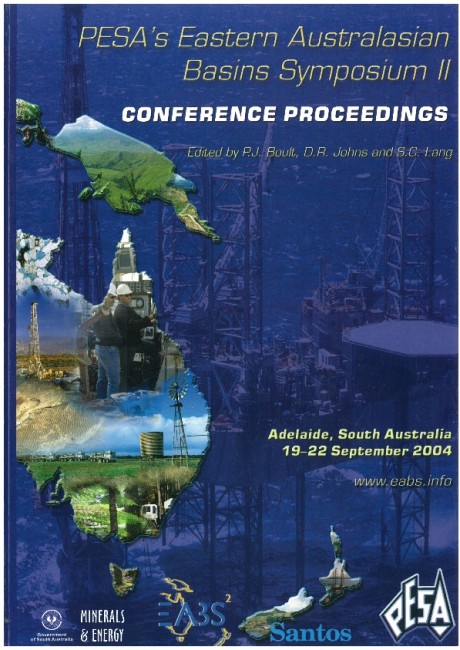Publication Name: PESA's Eastern Australasian Basin Symposium II
Authors: X. Sun and R.S. Nicoll
Date Published: December 2004
Number of Pages: 27
Reference Type: Book Section
Abstract:
The Warburton Basin has been one of the least studied Early Palaeozoic basins in Australia. The recent recovery of Late Cambrian and Early Ordovician conodonts from cores in four wells, Charo-1, Coongie-1, Wantana-1 andPacksaddle-!, have confirmed the presence of strata of this age in the basin.
Examination of the conodonts permits recognition of three biostratigraphic faunas. The oldest, Conodont Assemblage 1, is from the Late Cambrian, Datsonian, Cordylodus proavus to Cordylodus intermedius Zones. The middle, Conodont Assemblage 2 is from the Early Ordovician, Early Lancefieldian, Cordylodus angulatus to Rossodus manitouensis Zones. The youngest, Conodont Assemblage 3, is from the Early Ordovician, Late Lancefieldian, Paltodus deltifer Zone.
The conodonts were recovered from sandy Nuia (calcareous algae) and intraclastic grainstones in the upper part of the Kalladeina Formation. A high energy, shallow marine shoal environment is indicated by rip-up, flat pebble intraclasts, oncoids and early sea-floor cementation. Lack of accommodation space, sea-level fluctuation and the influx of siliciclastics have all played important roles in the sedimentation in the Warburton Basin, which can be correlated to global sea-level curves by means of the conodont faunas.
The conodont colour alteration index (CAl) of the conodonts recovered from the four wells range from CAl 1.5 in
Coongie-1, to CAl 4 in Wantana-1. A CAl 1.5 value indicates a temperature of 50 to 90?C and is in the early part of the oil generation window. CAl 4 indicates temperatures in the range of 190-300?C and equates with sediments in the dry gas to over-mature phase of petroleum generation. This highly elevated palaeotemperature is possibly caused by nearby granite intrusives.


